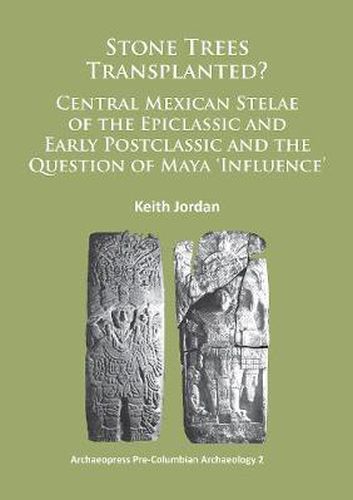Readings Newsletter
Become a Readings Member to make your shopping experience even easier.
Sign in or sign up for free!
You’re not far away from qualifying for FREE standard shipping within Australia
You’ve qualified for FREE standard shipping within Australia
The cart is loading…






Stelae dating to the Epiclassic (650-900 CE) and Early Postclassic (950-1150 CE) from Tula, Xochicalco, and other sites in Central Mexico have been presented in the archaeological and art historical literature of the last four decades-when they have been addressed at all-as evidence of Classic Maya ‘influence’ on Central Mexican art during these periods. This book re-evaluates these claims via detailed comparative analysis of the Central Mexican stelae and their claimed Maya counterparts. For the first time the Central Mexican stelae are placed in the context of often earlier local artistic traditions as well as other possible long-distance connections. Comparison of Tula and Xochicalco stelae with earlier and contemporary stelae from Oaxaca and Guerrero demonstrates connections equally as plausible as those posited with the Maya region, and supported by archaeological evidence. While it is clear that some Central Mexican stelae, especially Stela 4 from Tula, reflect Maya contacts, this has to be balanced by consideration of local and other long distance developments and connections.
$9.00 standard shipping within Australia
FREE standard shipping within Australia for orders over $100.00
Express & International shipping calculated at checkout
Stelae dating to the Epiclassic (650-900 CE) and Early Postclassic (950-1150 CE) from Tula, Xochicalco, and other sites in Central Mexico have been presented in the archaeological and art historical literature of the last four decades-when they have been addressed at all-as evidence of Classic Maya ‘influence’ on Central Mexican art during these periods. This book re-evaluates these claims via detailed comparative analysis of the Central Mexican stelae and their claimed Maya counterparts. For the first time the Central Mexican stelae are placed in the context of often earlier local artistic traditions as well as other possible long-distance connections. Comparison of Tula and Xochicalco stelae with earlier and contemporary stelae from Oaxaca and Guerrero demonstrates connections equally as plausible as those posited with the Maya region, and supported by archaeological evidence. While it is clear that some Central Mexican stelae, especially Stela 4 from Tula, reflect Maya contacts, this has to be balanced by consideration of local and other long distance developments and connections.